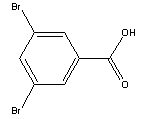

Hydrophilic substances such as cotton, wool, silk, and paper are readily swollen by water making access of the day to substrate relatively easy. The substrates can be grouped into two major classes-hydrophobic and hydrophilic. The major uses of dyes are in coloration of textile fibers and paper.

Because of the variety of materials that must be dyed in a complete spectrum of hues, manufacturer now offer many hundreds of distinctly different dyes. The manufacture and use of dyes is an important part of modern technology. Auxiliaries, dyes and dye intermediates play a vital role in textile processing industries. The modern tendency is towards an insistence on colour which is fast to light, washing, rubbing, and bleaching this movement makes a great demand on the science of dyeing. The prime consideration in the choice of Textile materials is the purpose for which they are intended, but colour has been termed the best salesman in the present scenario. Certain Textile Auxiliaries are also required in order to produce special finishing effects such as wash & wear, water repellence, flame retardancy, aroma finish, anti odour, colour deepening etc. Textile auxiliaries are defined as chemicals of formulated chemical products which enables a processing operation in preparation, dyeing, printing of finishing to be carried out more effectively or which is essential if a given effect is to be obtained.


 0 kommentar(er)
0 kommentar(er)
